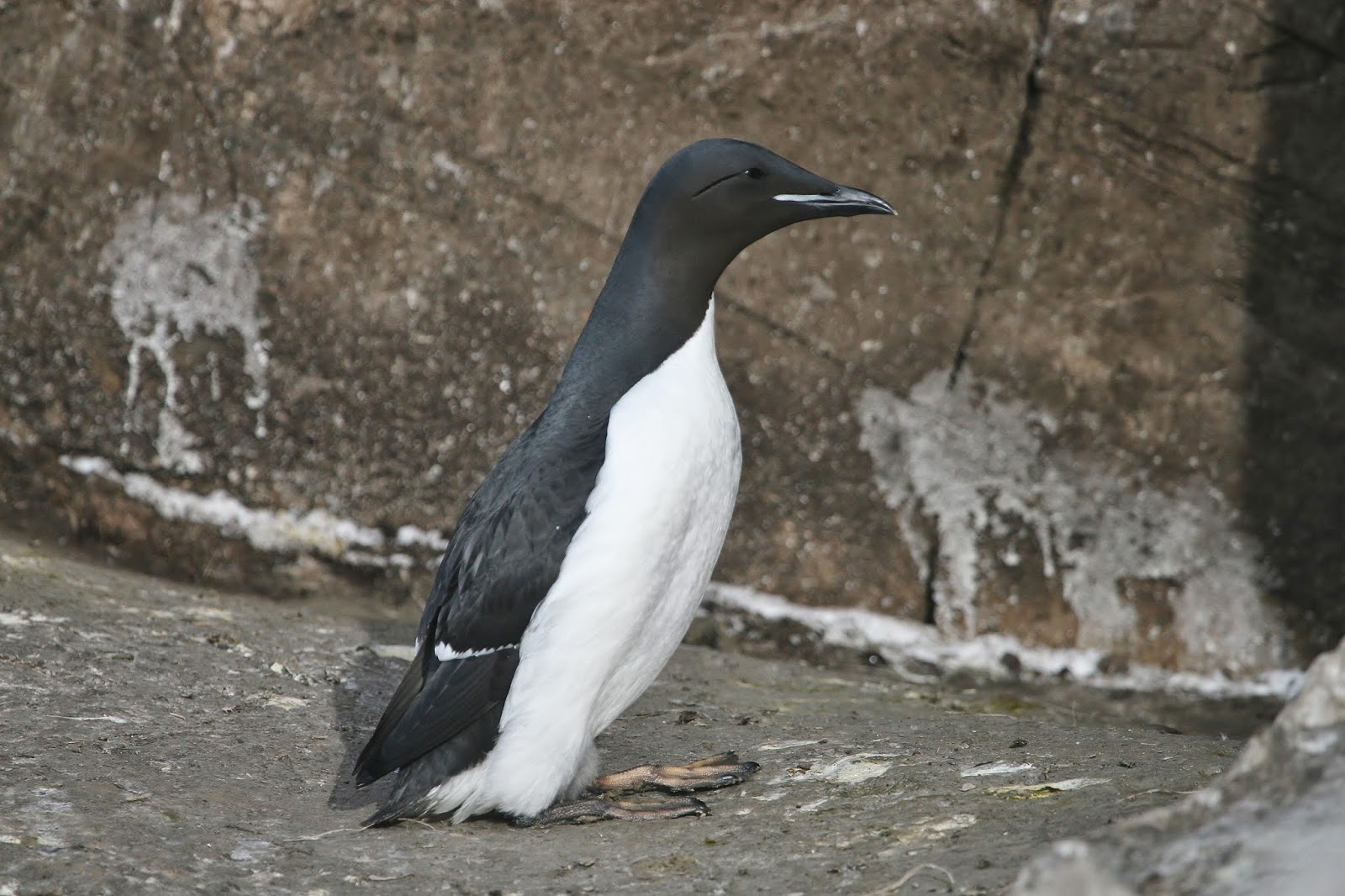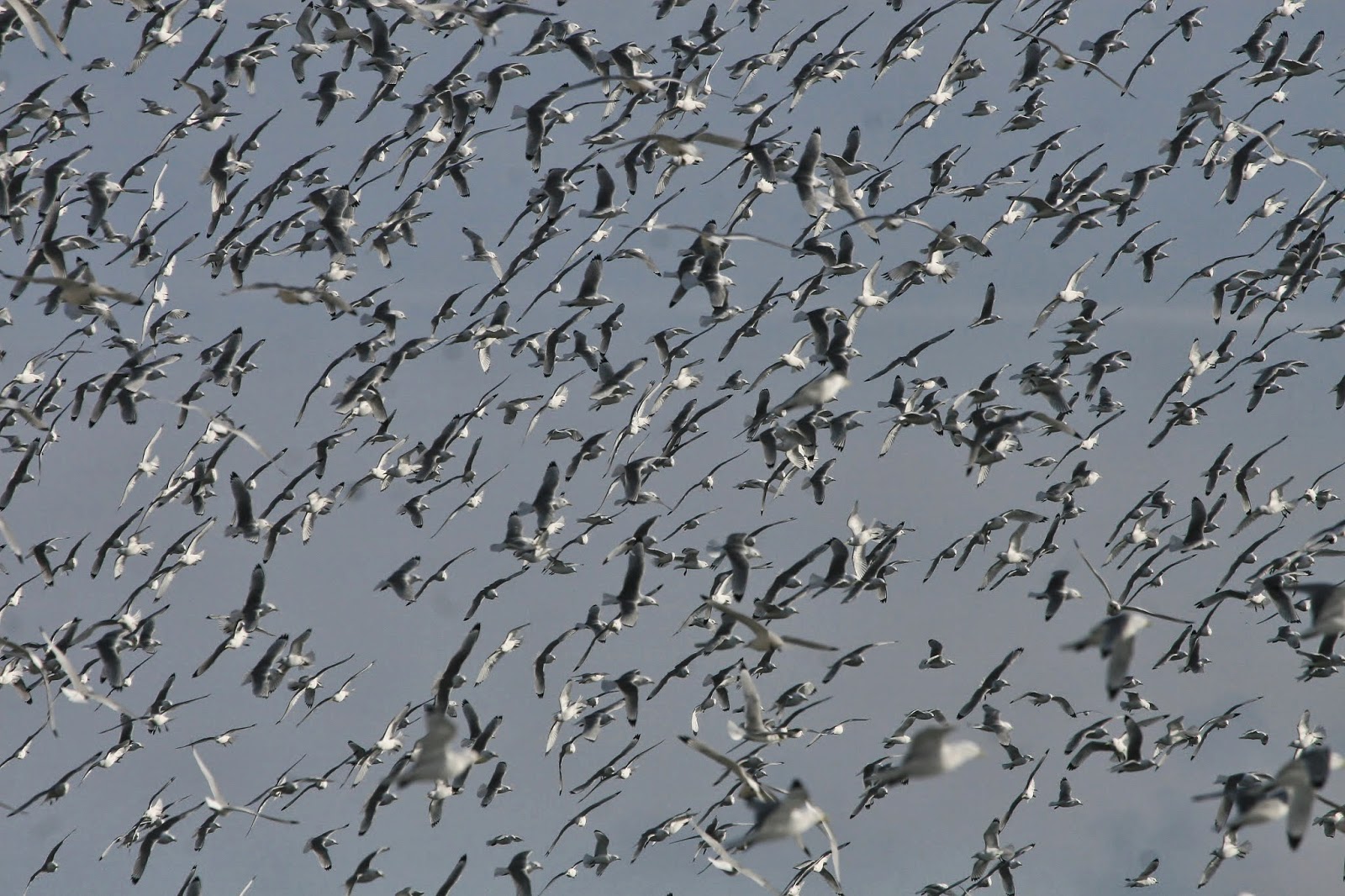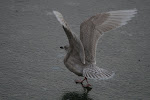Really clean flanks on Brunnich's compared to Commons (which is even more obvious with the heavier flank and belly markings of hyperborea Guillemots),
The white bar on the secondaries is more broad on in the inner secondaries, but unlike Razorbill, the Brunnich's wing bar tapers as it gets to the outer secondaries so it us more of a comma shape.
The number of breeding Puffins on Hornøya is ridiculous at about 15,000 pairs! Got fantastic views of lots 'playing' in the snow and then having c7000-8000 circling above our heads.
While there was a fantastic population of Kittiwakes on Hornøya and pretty much every coastal building with ledges on the Varangerfjord, the colony at Ekkerøy was superb! A ridiculous number that would flush together from the cliffs as Ravens patrolled.
Beautiful birds when you get a proper chance to look at them.
German birder Jörg Kretschmer showing the edge of what is possible with digiscoping....flight shots in a seabird colony with a hand held scope! So amazing to watch! He even showed us a shot he took of a flying Small White butterfly! How is that even possible?!
hyperborea 'Arctic' Guillemots
I would say that Brunnich's, being the one lifer from the seabird colonies was the best, but I was very interested in the Common Guillemots. They are of the race hyperborea, at least the identifiable ones were. On the paler end of the scale, they are hard to split from the Southern race of Guillemot that breed in England.
The above two and single below photos show individuals at the high end scale of hyperborea. The vast majority have some heavy barring on the flanks, but I noted at least 20 individuals with markings quite as heavily barred as the above birds. Some had a couple of fleckings in the breast, but the above birds were fantastic! I also noted that the dark birds were lacking a wing bar on the secondaries which accentuated the darkness.
In addition, all of the really dark birds appeared to be Bridled that I saw. The split in the colony was about 50/50 though between Bridled and non. I wonder if the non-bridled birds can show up as this dark?
I noticed an awful lot of Guillemots on Hornøya having orange legs. The same applied with Brunnich's with 50% of Brunnichs' feet observed were orange...another possible feature of northern birds perhaps? I'll have to scrutinize UK birds from now on.
As previously mentioned by Martin Garner, he noted spotted on the otherwise white underwing coverts. I only got a chance to scrutinize c10 and I wouldn't say this was a standardized feature throughout as several seemed all white.
As previously mentioned. The flank streaking was extraordinarily variable with several Guillemots looking rather pale which occasionally made picking out the clean Brunnich's more difficult.
Very interesting learning in a fantastic place!
















No comments:
Post a Comment